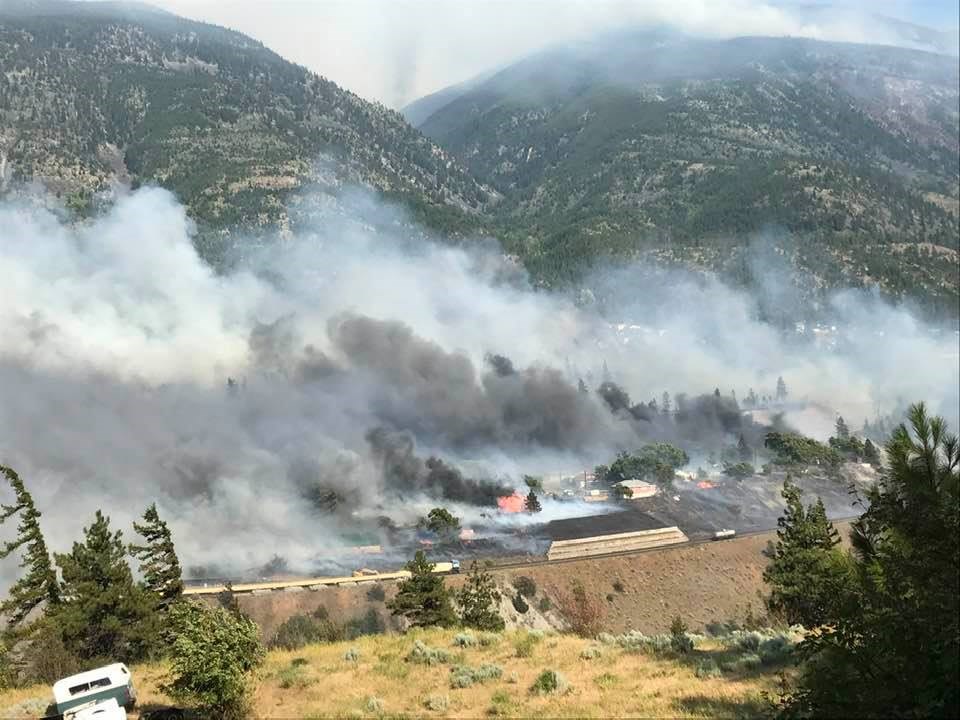It was a week that saw cataclysm stacked on top of tragedy — a deadly heat wave lit up the B.C. wildfire map, at least one burning Lytton to the ground just days after the town smashed Canada’s all-time heat record.
After more than 90 per cent of the town was devastated by fire, evacuated residents have been left struggling with guilt and anguish, tracking down loved ones and gathering what's left of their shattered lives.
“We do not yet know what started the fire in Lytton,” said Premier John Horgan Thursday when asked directly about the possibility that a spark from a train may have started the blaze.
Whatever ignited the blaze, experts say it’s hard to separate one event from the other: the heat dome that consumed B.C. with temperatures soaring over 40 C earlier in the week acted like a “flash drought” setting the stage for a devastating wildfire season, says fire ecologist Robert Gray.
“The hairs on the back of your neck start to go up,” he says. “All fuels are available.”
As the evacuated residents of Lytton scramble to find loved ones, Gray has been driving across the province fielding questions from emergency planners and communities about how to prepare for what’s expected to be a devastating wildfire season.
Emergency Management BC says there are currently 1,362 homes under evacuation order and 950 under alert. However, it's still not clear how many people are missing after the residents of Lytton fled in all directions. The RCMP is waiting for the Red Cross to register evacuees before it launches any missing persons investigations.
The weather doesn't appear to be letting up.
By Friday afternoon, roughly 12,000 lightning strikes the day before had added to 136 active fires in "a significant spread" across the province, according to Cliff Chapman, director of provincial operations for the BC Wildfire Service. Nine of those are classified as “wildfires of note” due to being highly visible or potentially posing a threat to public safety.
BC Wildfire Service crews remain "on a heightened alert," says fire information officer Jean Strong.
“We are considering the possibility of military assistance as well,” she says.
On the ground, the incredibly dry conditions are forcing firefighters to rethink how they defend communities from fire.
In the past, Gray says emergency planners would issue evacuations as fires reached within one kilometre of homes. Now, he says, fires are burning through the landscape so fast, that threshold needs to be moved to 10 or 15 kilometres away.
“It’s 100 per cent probability of ignition,” he says. “These things are making spectacular runs.”
A DANGEROUS FORECAST
Over the next week, Chapman says above-average seasonal temperatures are expected to continue with more wind than was seen under the heat dome. He expects the fires to have burned 100,000 hectares by the end of the weekend. That's above B.C.'s 10-year average.
“Generally speaking, we’re three weeks ahead of our drying cycle,” he says. “We’re just getting started.”
The above-seasonal average temperatures have led Environment Canada to blanket nearly all of Western Canada, from Vancouver Island to Western Ontario, in public weather alerts. Hot and dry conditions are expected to dominate July, August and September, says Environment Canada meteorologist Armel Castellan.
The only apt precedent, says Gray, are the devastating Australian bushfires of 2019 and 2020, which burned an area the size of Syria, killed well over 400 people, more than one billion animals and cost the country over $100 billion.
“We’re kind of set up for the same pattern,” he says. “Why aren’t we doing more is a big question.”
In Australia, climate change was found to play a critical role in intensifying hot, dry spells that desiccated the country’s forests and bush.
The same processes are happening a hemisphere away in British Columbia, where this year’s prevailing drought-like conditions have dried out a huge amount of fuel left lingering in the forests from decades of fire suppression.
Lytton, says UBC wildfire expert Lori Daniels, was the worst-case scenario but not unexpected.
“What we’re finding around the world, whether it’s Australia, Siberia or Western Canada, whoever gets the high-pressure system, a heat dome, are the places suffering,” she says. “It’s been our biggest fear.”
Daniels says that on average twice as much area is burning across Western Canada than the 1960s.
“The world’s changing very quickly around us,” she says. “We’re on a path that will not change as long as there’s carbon going into the atmosphere.”
B.C. CALLING FOR MILITARY ASSISTANCE
The BC Wildfire Service says it has 1,700 seasonal firefighters and has contracted 59 companies to provide another 2,144 firefighters to battle blazes across the province.
That’s not enough, says Gray. With fires consuming the resources of most of the American West, he warns B.C. shouldn’t expect any help from neighbouring jurisdictions as the season goes on.
“This year, we can’t rely on the U.S. to help us. They’re going to have their hands full,” Gray tells Glacier Media.
To make things worse, the heat dome working across Alberta, Saskatchewan, Manitoba and Ontario means B.C. shouldn’t rely on aid from those provinces either.
Strong confirmed those concerns, saying B.C. has requested additional firefighters and resources through the Canadian Interagency Forest Fire Centre (CIFFC).
“We’ve put in a request for more out-of-province resources,” she says. “But national wildfire availability is limited.”
Chapman clarified at a press conference Friday afternoon that B.C. has already had one request to divert firefighters through the CIFFC approved and another request is going in next week.
Chapman also said B.C. is working to get the federal government to sign off military air assets, like a Hercules transport aircraft and medium- and heavy-lift helicopters to ferry firefighters and equipment across the province.
“We feel like we have the ground personnel to attack the fires that are currently burning,” he says.
But that could change quickly, he adds, noting that military ground forces “will remain an option for us.”
With files from Colin Dacre



